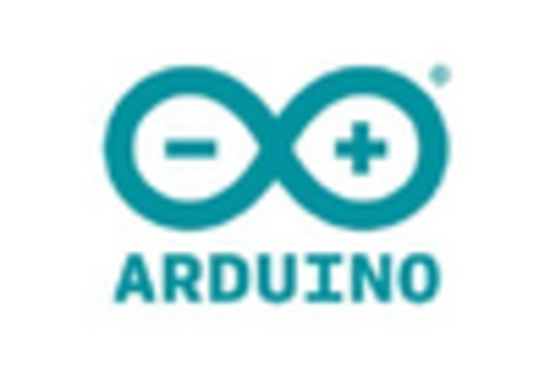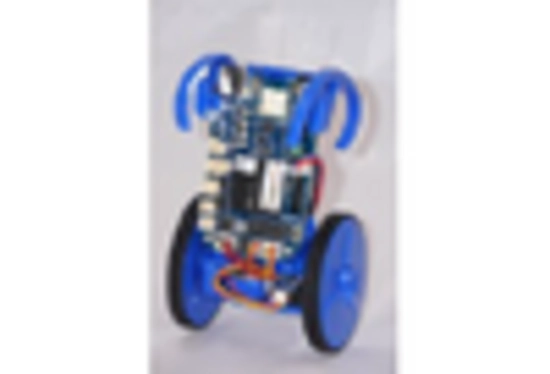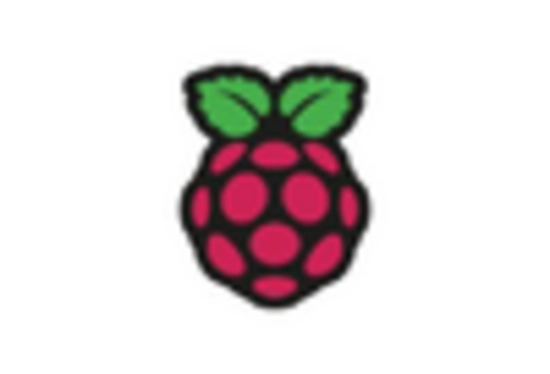Rising Demand for Edge Computing
The Single Board Computer Market is experiencing a notable surge in demand for edge computing solutions. As organizations increasingly seek to process data closer to the source, single board computers are becoming essential for enabling real-time analytics and decision-making. This trend is particularly evident in sectors such as manufacturing and healthcare, where latency can significantly impact operational efficiency. According to recent data, the edge computing market is projected to grow at a compound annual growth rate of over 30%, indicating a robust opportunity for single board computer manufacturers. The ability of these devices to handle complex tasks at the edge positions them as critical components in modern IT infrastructures, thereby driving growth in the Single Board Computer Market.
Expansion of Robotics and Automation
The Single Board Computer Market is witnessing a significant expansion driven by the increasing adoption of robotics and automation technologies. Industries such as logistics, agriculture, and manufacturing are integrating single board computers into their robotic systems to enhance functionality and efficiency. These compact devices provide the necessary processing power for tasks ranging from simple automation to complex machine learning applications. Market data suggests that the robotics sector is expected to grow substantially, with a projected market size reaching several billion dollars in the coming years. This growth is likely to propel the demand for single board computers, as they serve as the backbone for many robotic applications, thus reinforcing their importance in the Single Board Computer Market.
Increased Focus on Smart Home Technologies
The Single Board Computer Market is benefiting from the rising focus on smart home technologies. As consumers increasingly seek to automate their living spaces, single board computers are being integrated into various smart home devices, including security systems, lighting controls, and energy management solutions. This integration allows for enhanced connectivity and control, making homes more efficient and user-friendly. Market analysis indicates that the smart home market is projected to grow significantly, with billions of dollars in revenue anticipated over the next few years. This growth is likely to create a favorable environment for single board computer manufacturers, as their products are essential for powering the next generation of smart home applications within the Single Board Computer Market.
Growth in DIY Electronics and Maker Culture
The Single Board Computer Market is significantly influenced by the burgeoning DIY electronics and maker culture. As more individuals and small businesses engage in electronics projects, the demand for accessible and affordable computing solutions has surged. Single board computers, such as Raspberry Pi and Arduino, have become staples in this community, enabling hobbyists and innovators to create a wide array of projects, from home automation to educational tools. Recent statistics indicate that the maker movement has gained traction, with millions of users participating in online forums and workshops. This trend not only fosters creativity but also drives sales in the Single Board Computer Market, as these devices are often the first choice for aspiring engineers and tech enthusiasts.
Advancements in Artificial Intelligence and Machine Learning
The Single Board Computer Market is poised for growth due to advancements in artificial intelligence (AI) and machine learning (ML) technologies. As these technologies become more prevalent across various sectors, the need for compact and efficient computing solutions has intensified. Single board computers are increasingly being utilized for AI and ML applications, enabling developers to create intelligent systems that can learn and adapt. Recent projections suggest that the AI market will reach trillions of dollars in value, indicating a substantial opportunity for single board computer integration. This trend not only enhances the capabilities of single board computers but also positions them as vital components in the evolving landscape of the Single Board Computer Market.
















Leave a Comment